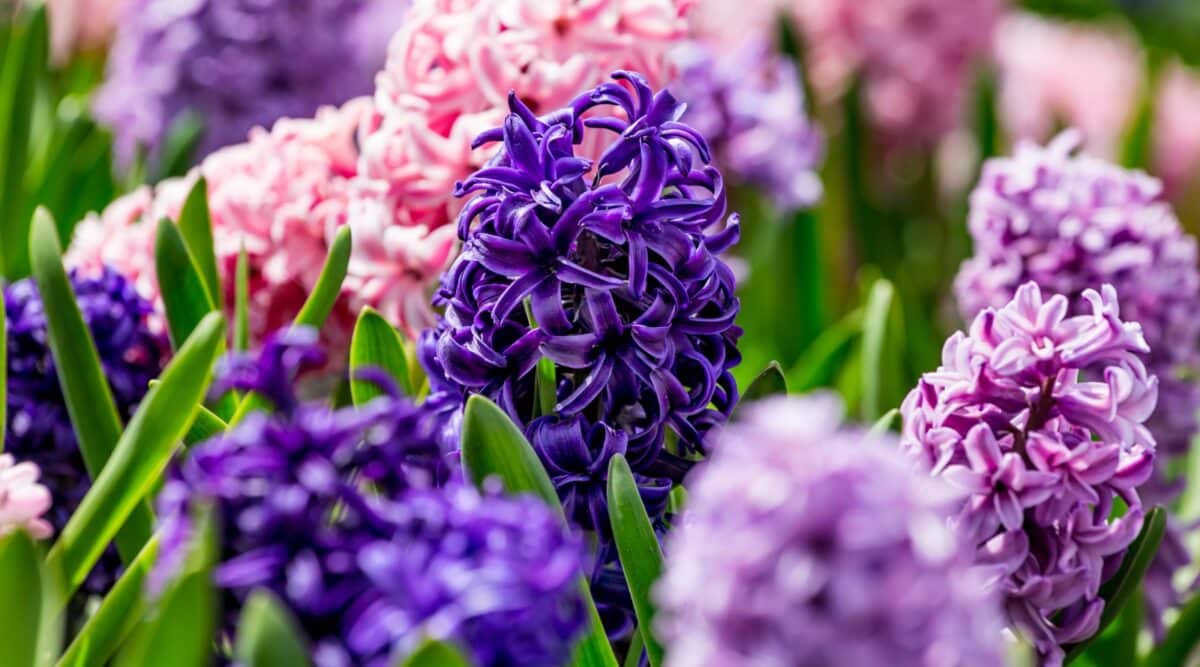
Hyacinthoides, commonly known as bluebells, are a captivating and enchanting genus of flowering plants. They belong to the Asparagaceae family and are native to Europe, particularly the British Isles. These stunning flowers are renowned for their vibrant blue hues, which create a breathtaking carpet of color in woodland areas during springtime.
Aside from their visual appeal, hyacinthoides also have a rich history and fascinating characteristics that make them worth exploring. In this article, we will delve into 13 captivating facts about hyacinthoides that will deepen your appreciation for these beautiful plants. From their cultural significance to their ecological importance, there is so much more to discover about these beloved flowers.
Key Takeaways:
- Bluebells, also known as Hyacinthoides, are native to Western Europe and symbolize the arrival of spring with their vibrant blue blooms, attracting pollinators and providing a valuable wildlife habitat.
- These fragrant flowers have medicinal uses, can be grown indoors, and come in hybrid varieties, making them a captivating and resilient choice for gardens, while also symbolizing loyalty and constancy in folklore and poetry.
Native to Western Europe
Hyacinthoides, commonly known as bluebells, are native to Western Europe. These beautiful flowering plants are often found in woodland areas, bringing a vibrant splash of color to the forest floor.
Symbol of Spring
Bluebells are often considered a symbol of spring. Their arrival signifies the beginning of the season, and their delicate blue blooms create a mesmerizing carpet of color in gardens and natural habitats alike.
Protected Species
In the United Kingdom, bluebells are protected under the Wildlife and Countryside Act of It is illegal to pick, uproot, or sell them without permission.
Fragrant Flowers
One of the most captivating features of bluebells is their sweet, delicate fragrance. The scent of a carpet of bluebells in full bloom can be truly enchanting.
Attracts Pollinators
The bell-shaped flowers of the hyacinthoides attract various pollinators, including bees and butterflies. They play an important role in supporting the ecosystem by helping in the pollination of other plants.
Drought Tolerant
Bluebells are known for their ability to tolerate drought conditions. This makes them a resilient choice for gardens in arid regions.
Medicinal Uses
In traditional herbal medicine, bluebells were used to treat a variety of ailments such as coughs, respiratory issues, and rheumatic conditions.
Can Be Grown Indoors
With their vibrant blue flowers and charming fragrance, bluebells can also be grown indoors as potted plants. This allows flower enthusiasts to enjoy their beauty year-round.
Hybrid Varieties
There are hybrid varieties of bluebells that exhibit a range of colors, including white, pink, and even purple. These unique variants add diversity and visual interest to gardens.
Symbol of Loyalty
In folklore and poetry, bluebells are often seen as a symbol of loyalty and constancy. They are associated with everlasting love and are a popular choice for wedding bouquets.
Wildlife Habitat
Bluebell woods provide a valuable habitat for a range of wildlife, including birds, insects, and small mammals. The dense foliage and nectar-rich flowers offer shelter and food sources.
Named After Hyacinthus
The genus Hyacinthoides is named after Hyacinthus, a figure from Greek mythology. Hyacinthus was a youth loved by the god Apollo, and when he died, a flower named after him sprouted from his blood.
Spring Bloomers
Bluebells typically bloom in late spring, adding a burst of color to landscapes after the winter months. Their arrival is eagerly awaited by nature enthusiasts and photographers alike.
In conclusion, these were just a few of the captivating facts about Hyacinthoides. From their stunning blue blooms to their symbolic meanings, these flowers bring beauty and wonder to the world of plants. Whether in your garden or in a natural woodland setting, encountering a carpet of bluebells is a truly enchanting experience.
Conclusion
In conclusion, Hyacinthoides, commonly known as the bluebell, is a captivating plant with a rich history and impressive characteristics. From its stunning appearance to its delicate fragrance, the hyacinthoides has enchanted people for centuries. Its ability to thrive in various environments and its contribution to biodiversity make it an important part of the natural world. Whether you encounter a field of bluebells in the wild or cultivate them in your garden, the beauty of these flowers is sure to leave a lasting impression. So, next time you come across the enchanting hyacinthoides, take a moment to appreciate its unique charm and the fascinating facts that make it so special.
FAQs
1. Are hyacinthoides the same as bluebells?
Yes, hyacinthoides is the botanical name for the common bluebell flower.
2. Can I grow hyacinthoides in my garden?
Absolutely! Hyacinthoides can be cultivated in gardens, provided that they are given the right conditions of partial shade and well-drained soil.
3. When do hyacinthoides bloom?
Hyacinthoides typically bloom in the spring, usually between April and May, adding a splash of vibrant color to gardens and woodlands.
4. Are hyacinthoides toxic to pets?
Yes, hyacinthoides contain toxic substances that can be harmful to cats, dogs, and other animals if ingested. It’s best to keep pets away from these plants.
5. Do hyacinthoides have any medicinal properties?
Traditionally, hyacinthoides have been used in herbal medicine for their diuretic and expectorant properties. However, it is important to consult with a healthcare professional before using them for any medicinal purposes.
Hyacinthoides captivate with their enchanting beauty, but did you know other flowers hold equally fascinating secrets? Bluebells, close relatives of Hyacinthoides, have their own set of surprising characteristics. From the unbelievable adaptations of certain Bluebell species to the astonishing facts surrounding Common Bluebells, there's much more to explore in the world of these charming blooms. Delving deeper into the realm of Bluebell flowers reveals a treasure trove of knowledge waiting to be uncovered. So, let's embark on a journey to discover the hidden wonders of Bluebells and expand our appreciation for these captivating floral gems.
Was this page helpful?
Our commitment to delivering trustworthy and engaging content is at the heart of what we do. Each fact on our site is contributed by real users like you, bringing a wealth of diverse insights and information. To ensure the highest standards of accuracy and reliability, our dedicated editors meticulously review each submission. This process guarantees that the facts we share are not only fascinating but also credible. Trust in our commitment to quality and authenticity as you explore and learn with us.


